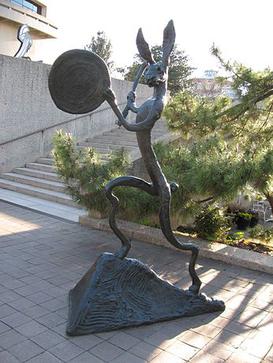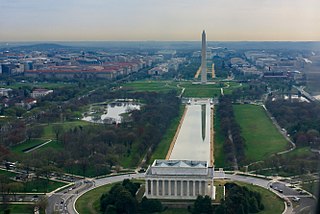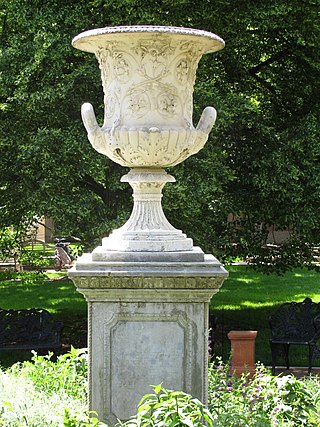Self-guided Sightseeing Tour #3 in Washington, United States
Legend
Tour Facts
4.5 km
103 m
Experience Washington in United States in a whole new way with our free self-guided sightseeing tour. This site not only offers you practical information and insider tips, but also a rich variety of activities and sights you shouldn't miss. Whether you love art and culture, want to explore historical sites or simply want to experience the vibrant atmosphere of a lively city - you'll find everything you need for your personal adventure here.
Individual Sights in WashingtonSight 1: United States Capitol
The United States Capitol, often called the Capitol or the Capitol Building, is the seat of the United States Congress, the legislative branch of the federal government. It is located on Capitol Hill at the eastern end of the National Mall in Washington, D.C. Although no longer at the geographic center of the national capital, the U.S. Capitol forms the origin point for the street-numbering system of the district as well as its four quadrants. Like the principal buildings of the executive and judicial branches, the Capitol is built in a neoclassical style and has a white exterior.
Sight 2: James A. Garfield Monument
The James A. Garfield Monument stands on the grounds of the United States Capitol in Garfield Circle, a traffic circle at First Street and Maryland Avenue SW in Washington, D.C. It is a memorial to U.S. President James A. Garfield, who was elected in 1880 and assassinated in 1881 after serving only four months of his term. The perpetrator was an attorney and disgruntled office-seeker named Charles J. Guiteau. Garfield lived for several weeks after the shooting, but eventually succumbed to his injuries. The monument is part of a three-part sculptural group near the Capitol Reflecting Pool, including the Peace Monument and the Ulysses S. Grant Memorial in Union Square. The monument is also a contributing property to the National Mall and L'Enfant Plan, both of which are listed on the National Register of Historic Places and the District of Columbia Inventory of Historic Sites. The bronze statue rests on a granite pedestal that features three sculptures, each one representing a time period in Garfield's life.
Sight 3: Union Square
Union Square is an 11-acre public plaza at the foot of Capitol Hill in Washington, D.C., United States. It encompasses the Ulysses S. Grant Memorial (1924) and the 6-acre Capitol Reflecting Pool (1971) and is just west of the United States Capitol building. Views differ as to whether the Square is just east of the National Mall or is itself the eastern end.
Sight 4: National Museum of the American Indian
The National Museum of the American Indian is a museum in the United States devoted to the culture of the Indigenous peoples of the Americas. It is part of the Smithsonian Institution group of museums and research centers.
Wikipedia: National Museum of the American Indian (EN), Website, Facebook, Instagram
Sight 5: Museum of the Bible
The Museum of the Bible is a museum in Washington, D.C., owned by Museum of the Bible, Inc., a non-profit organization established in 2010 by the Green family. The museum documents the narrative, history, and impact of the Bible. It opened on November 17, 2017, and has 1,150 items in its permanent collection and 2,000 items on loan from other institutions and collections.
Sight 6: Delta Solar
Delta Solar is a public artwork by Venezuelan sculptor Alejandro Otero located outside of the National Air and Space Museum in Washington, DC, United States. Delta Solar is meant to pay homage to modern technology and the Inca sun cult.
Sight 7: Upright Motive No. 1: Glenkiln Cross
Upright Motive No. 1: Glenkiln Cross is a bronze sculpture by Henry Moore, cast in a number of copies in 1955–56. It was the first of a series of narrow vertical sculptures by Moore, who compared them to totem poles.
Sight 8: Are Years What? (for Marianne Moore)
Are Years What? is a sculpture by American artist Mark di Suvero. It is in the collection of the Hirshhorn Museum and Sculpture Garden, in Washington, D.C., United States. The sculpture is named after poet Marianne Moore's "What Are Years". From May 22, 2013 through May 26, 2014, the sculpture resided temporarily in San Francisco, as part of the San Francisco Museum of Modern Art's Mark di Suvero exhibition at Crissy Field.
Sight 9: Voltri XV
Voltri XV is an abstract sculpture by David Smith.
Sight 10: Eros, Inside Eros
Eros, Inside Eros (1986) is a bronze sculpture by Arman.
Sight 11: Brushstroke
Brushstroke is a sculpture by Roy Lichtenstein. There are two copies. The original was created in 2001 for the Museo Nacional Centro de Arte Reina Sofía in Madrid, Spain. The second was delivered to the Hirshhorn Museum and Sculpture Garden in Washington, DC, on September 16, 2003, and dedicated on October 25, 2003.
Sight 12: For Gordon Bunshaft
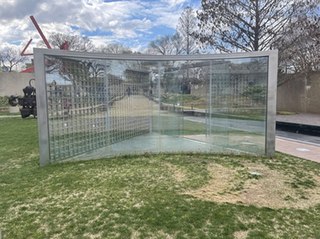
For Gordon Bunshaft is a 2006 sculpture by Dan Graham, installed at the Hirshhorn Museum and Sculpture Garden in Washington, D.C., United States. The work, which refers to American architect Gordon Bunshaft, was installed by the reflection pool of the Bunshaft-designed sculpture garden at the Hirshhorn on May 30, 2008.
Sight 13: Hirshhorn Sculpture Garden
The Hirshhorn Museum and Sculpture Garden is an art museum beside the National Mall in Washington, D.C., United States. The museum was initially endowed during the 1960s with the permanent art collection of Joseph H. Hirshhorn. It was designed by architect Gordon Bunshaft and is part of the Smithsonian Institution. It was conceived as the United States' museum of contemporary and modern art and currently focuses its collection-building and exhibition-planning mainly on the post–World War II period, with particular emphasis on art made during the last 50 years.
Sight 14: Nymph (Central Figure for The Three Nymphs)
Nymph is a bronze sculpture, by Aristide Maillol. It was modeled in 1930, and cast in 1953, it is at the Hirshhorn Museum and Sculpture Garden.
Wikipedia: Nymph (Central Figure for "The Three Graces") (EN)
Sight 15: Monumental Head
Monumental Head is a 1960 bronze sculpture by Alberto Giacometti, installed at the Hirshhorn Museum and Sculpture Garden in Washington, D.C., in the United States. The abstract work measures 37 x 11 3/4 x 14 3/4 inches and depicts a roughly modeled head with an extended neck. Other casts of Monumental Head from this period are found in the collections of other institutions, including the Phillips Collection and the Los Angeles County Museum of Art.
Sight 16: The Drummer
The Drummer is a bronze sculpture, by Barry Flanagan.
Sight 17: Spatial Concept: Nature
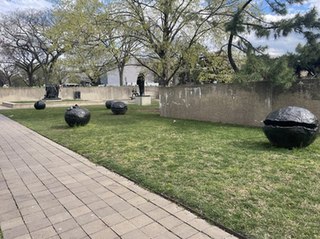
Spatial Concept: Nature is a series of bronze sculptures by Lucio Fontana designed between 1959 and 1960. A series of these sculptures cast in 1965 is installed at the Hirshhorn Museum and Sculpture Garden in Washington, D.C., United States, and a set cast in 1961 is owned by the Walker Art Center and installed in the Minneapolis Sculpture Garden in Minneapolis, United States.
Sight 18: The Mall
The National Mall is a landscaped park near the downtown area of Washington, D.C., the capital city of the United States. It contains and borders a number of museums of the Smithsonian Institution, art galleries, cultural institutions, and various memorials, sculptures, and statues. It is administered by the National Park Service (NPS) of the United States Department of the Interior as part of the National Mall and Memorial Parks unit of the National Park System. The park receives approximately 24 million visitors each year. Designed by Pierre L'Enfant, the "Grand Avenue" or Mall was to be a democratic and egalitarian space—unlike palace gardens, such as those at Versailles in France, that were paid for by the people but reserved for the use of a privileged few.
Sight 19: Andrew Jackson Downing Urn
The Andrew Jackson Downing Urn, also known as the Downing Urn, is a memorial and public artwork located in the Enid A. Haupt Garden of the Smithsonian Institution on the National Mall in Washington, D.C.
Sight 20: Arthur M. Sackler Gallery
The Arthur M. Sackler Gallery is an art museum of the Smithsonian Institution in Washington, D.C., focusing on Asian art. The Sackler Gallery and the Freer Gallery of Art together form the National Museum of Asian Art in the United States. The Freer and Sackler galleries house the largest Asian art research library in the country.
Sight 21: National Museum of African Art
The National Museum of African Art is the Smithsonian Institution's African art museum, located on the National Mall of the United States capital. Its collections include 9,000 works of traditional and contemporary African art from both Sub-Saharan and North Africa, 300,000 photographs, and 50,000 library volumes. It was the first institution dedicated to African art in the United States and remains the largest collection. The Washington Post called the museum a mainstay in the international art world and the main venue for contemporary African art in the United States.
Sight 22: International Spy Museum
The International Spy Museum is an independent non-profit history museum which documents the tradecraft, history, and contemporary role of espionage. It holds the largest collection of international espionage artifacts on public display. The museum opened in 2002 in the Penn Quarter neighborhood of Washington, D.C., and relocated to L'Enfant Plaza in 2019.
Share
How likely are you to recommend us?
Disclaimer Please be aware of your surroundings and do not enter private property. We are not liable for any damages that occur during the tours.
GPX-Download For navigation apps and GPS devices you can download the tour as a GPX file.

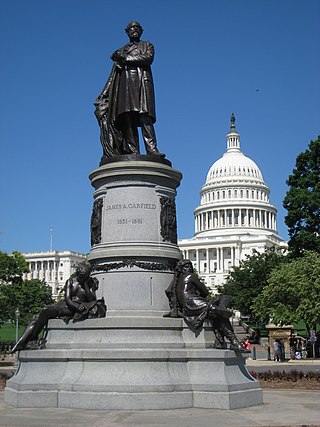
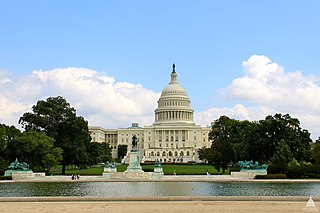

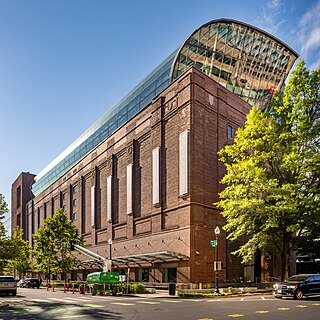


.jpg)
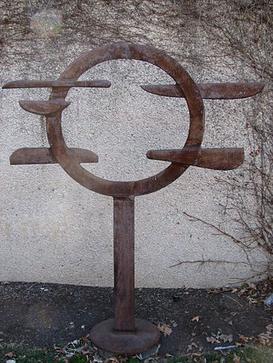
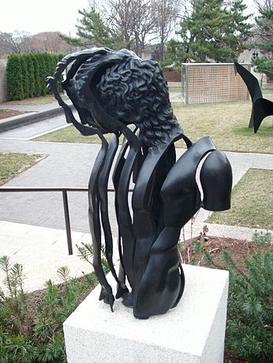
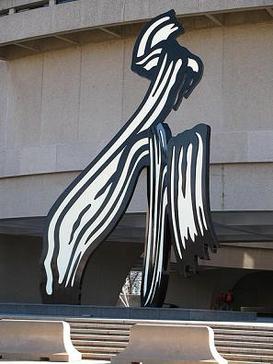

.jpg)
